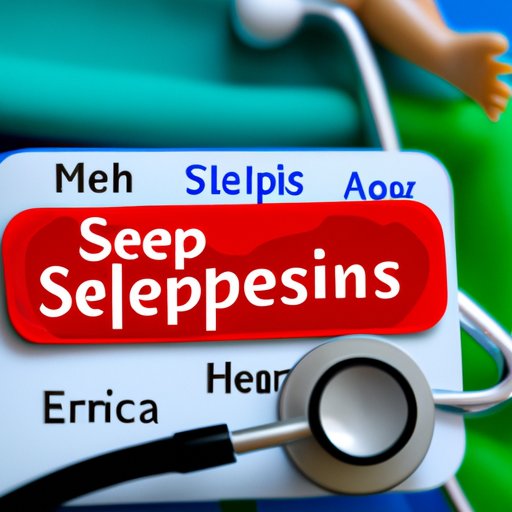
Treating Sepsis: Understanding Symptoms, Causes, and Treatment
Sepsis is a life-threatening medical emergency that occurs when the body responds abnormally to an infection, leading to organ failure, tissue damage, and even death. According to the Centers for Disease Control and Prevention (CDC), sepsis affects over 1.5 million people in the United States every year and causes at least 250,000 related deaths. While sepsis can affect anyone, it is particularly dangerous for young children, older adults, and people with weakened immune systems.
10 Warning Signs of Sepsis to Know and How to Respond
Sepsis can develop quickly and progress rapidly, so it’s essential to recognize the warning signs as early as possible. Some of the most common symptoms of sepsis include:
- High fever or hypothermia (low body temperature)
- Rapid heartbeat and breathing
- Confusion, disorientation, or dizziness
- Shortness of breath or difficulty breathing
- Extreme fatigue or lethargy
- Decreased urine output or dark, cloudy urine
- Skin that is warm or cool to the touch, or clammy and sweaty
- Abdominal pain or discomfort
- Nausea, vomiting, and diarrhea
- Redness, swelling, or discharge around a wound or injury site
If you or someone you know experiences any of these symptoms, seek medical attention immediately. Early treatment can significantly improve the chances of recovery and prevent further complications.
What Causes Sepsis and How to Prevent It
Sepsis occurs when the body’s immune response to an infection goes into overdrive. The infection can originate from any part of the body, including the lungs, urinary tract, skin, or gastrointestinal system. Some of the most common causes of sepsis include pneumonia, urinary tract infections, bloodstream infections, and post-surgery infections.
While not all cases of infection lead to sepsis, there are ways to prevent sepsis from developing. One of the most effective ways to prevent sepsis is through vaccination. Getting vaccinated against flu, pneumonia, and other infectious diseases can reduce the risk of contracting an infection that may lead to sepsis.
Other strategies to prevent sepsis include practicing good hygiene, such as washing hands regularly, avoiding contact with people who are sick, and following proper wound care procedures. It is also essential to keep the living and working environments clean and safe to reduce exposure to harmful bacteria and viruses.
The Importance of Fast Treatment for Sepsis
When left untreated, sepsis can quickly escalate to septic shock, a life-threatening condition that causes blood pressure to drop dangerously low. Treating sepsis as soon as possible is essential to prevent further damage and increase the chances of recovery.
The primary approach to treating sepsis is through antibiotics, which can kill the bacteria or virus causing the infection. Fluid management is also crucial in the early stages of sepsis to keep the body hydrated and maintain blood pressure levels.
It’s essential to communicate with medical professionals throughout the treatment process and actively participate in treatment decisions. Some cases of sepsis may require more advanced interventions, such as oxygen therapy, renal replacement therapy, or surgery. It is also important to note that recovery from sepsis can take weeks or months and may require rehabilitation or long-term medication.
Living with Sepsis – A Survivor’s Guide
Surviving sepsis can be a traumatic experience that may cause physical, emotional and psychological challenges. Post-sepsis syndrome (PSS) is a common condition experienced by survivors that can result in symptoms such as chronic fatigue, muscle weakness, insomnia, and difficulty concentrating.
Recovering from sepsis may require a combination of physical and psychological support. Some strategies that may help manage post-sepsis symptoms include physical therapy, occupational therapy, yoga, and meditation. It is also important to seek emotional support from family, friends, and healthcare professionals.
Exploring the Connection between Sepsis and Mental Health
Sepsis can have long-term effects on mental health, including depression, post-traumatic stress disorder (PTSD), and anxiety. Survivors of sepsis may also experience cognitive impairment, memory loss, and difficulty concentrating. Seeking mental health support and treatment alongside physical rehabilitation can help manage these symptoms.
Preventing infections that may cause sepsis can help reduce the risk of mental health complications. It is also essential to practice self-care, such as getting enough sleep, eating a healthy diet, and exercising regularly.
How to Support a Loved One with Sepsis: Tips for Caregivers
Sepsis not only affects the patient but also their loved ones. Caregivers play a critical role in the recovery process, providing emotional and practical support to their loved ones.
To support a loved one with sepsis, it is essential to educate yourself about sepsis and its symptoms and treatment. Practical advice includes helping with daily activities, appointing an advocate, and accompanying the patient to medical appointments. Caregivers must also take care of their own mental and physical health and seek support when necessary.
Conclusion
Sepsis is a serious medical emergency that requires fast recognition and immediate treatment. Early intervention can increase the chances of survival, prevent further complications, and reduce the long-term effects of sepsis on mental and physical health. By taking preventive measures, recognizing symptoms early, and seeking medical attention when necessary, we can work towards reducing the impact of sepsis on individuals and society as a whole.





